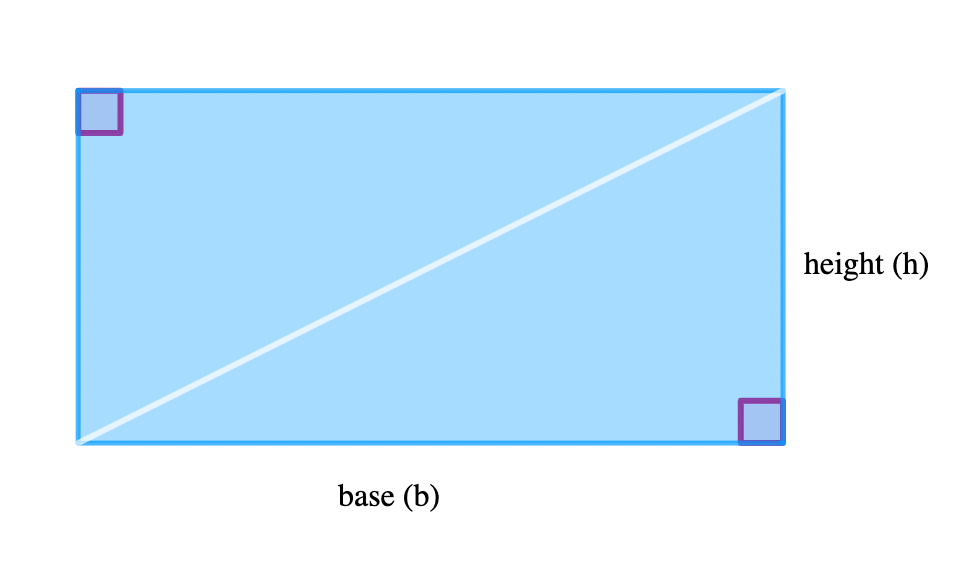Topic Content:
- Area of a Triangle
If you divide a rectangle into two equal parts by drawing any of its diagonals, each half of the rectangle is a right-angled triangle. See the diagram below. We can then use this to find the area of a triangle.

Area of a right-angled \( \scriptsize \Delta = \normalsize \frac {1}{2} \scriptsize \; \times \; base \; \times \; height \)
Example 8.5.1:
Calculate the area of the triangle with a base of 6 cm and a height of 4 cm
Solution:
You are viewing an excerpt of this Topic. Subscribe Now to get Full Access to ALL this Subject's Topics and Quizzes for this Term!
Click on the button "Subscribe Now" below for Full Access!
Subscribe Now
Note: If you have Already Subscribed and you are seeing this message, it means you are logged out. Please Log In using the Login Button Below to Carry on Studying!



Responses